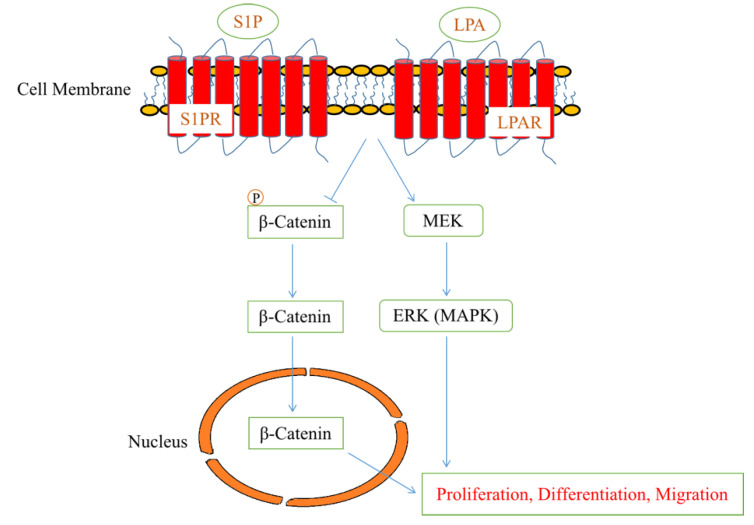Figure 3.
Lysophospholipid signaling in induced pluripotent stem cells (iPSCs). When introduced to iPSCs during the cardiomyocyte differentiation process, S1P and LPA bind to their respective GPCRs to activate the Wnt/β-catenin and MAPK signaling pathways. S1P and LPA facilitate nuclear localization of β-catenin, likely by increasing the available pool of its non-phosphorylated form. They also activate MEK (MAPKK), which then activates ERK (MAPK), leading to cell cycle progression. The downstream effects of S1P and LPA include enhanced cardiac differentiation of iPSCs and increased cellular proliferation and migration. The mechanisms described in this figure may recapitulate the pathways activated by lysophospholipids in the regulation of cardiovascular development in vivo. Abbreviations: GPCR, G-protein coupled receptor; iPSC, induced pluripotent stem cell; LPA, lysophosphatidic acid; LPAR, LPA receptor; MAPK, mitogen-activated protein kinase; S1P, sphingosine-1-phosphate; S1PR, S1P receptor.

